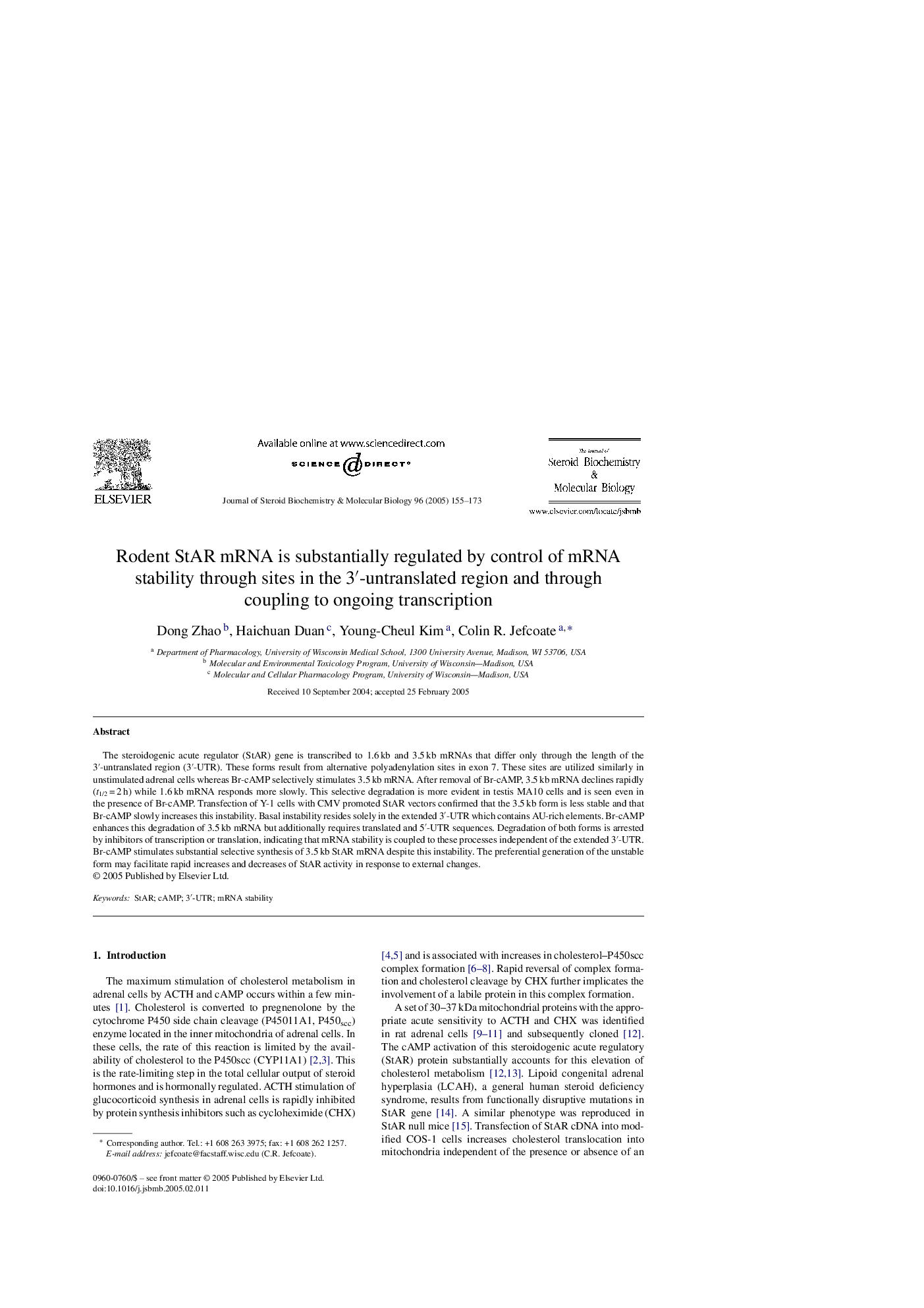| Article ID | Journal | Published Year | Pages | File Type |
|---|---|---|---|---|
| 9892096 | The Journal of Steroid Biochemistry and Molecular Biology | 2005 | 19 Pages |
Abstract
The steroidogenic acute regulator (StAR) gene is transcribed to 1.6Â kb and 3.5Â kb mRNAs that differ only through the length of the 3â²-untranslated region (3â²-UTR). These forms result from alternative polyadenylation sites in exon 7. These sites are utilized similarly in unstimulated adrenal cells whereas Br-cAMP selectively stimulates 3.5Â kb mRNA. After removal of Br-cAMP, 3.5Â kb mRNA declines rapidly (t1/2Â =Â 2Â h) while 1.6Â kb mRNA responds more slowly. This selective degradation is more evident in testis MA10 cells and is seen even in the presence of Br-cAMP. Transfection of Y-1 cells with CMV promoted StAR vectors confirmed that the 3.5Â kb form is less stable and that Br-cAMP slowly increases this instability. Basal instability resides solely in the extended 3â²-UTR which contains AU-rich elements. Br-cAMP enhances this degradation of 3.5Â kb mRNA but additionally requires translated and 5â²-UTR sequences. Degradation of both forms is arrested by inhibitors of transcription or translation, indicating that mRNA stability is coupled to these processes independent of the extended 3â²-UTR. Br-cAMP stimulates substantial selective synthesis of 3.5Â kb StAR mRNA despite this instability. The preferential generation of the unstable form may facilitate rapid increases and decreases of StAR activity in response to external changes.
Keywords
Related Topics
Life Sciences
Biochemistry, Genetics and Molecular Biology
Biochemistry
Authors
Dong Zhao, Haichuan Duan, Young-Cheul Kim, Colin R. Jefcoate,
